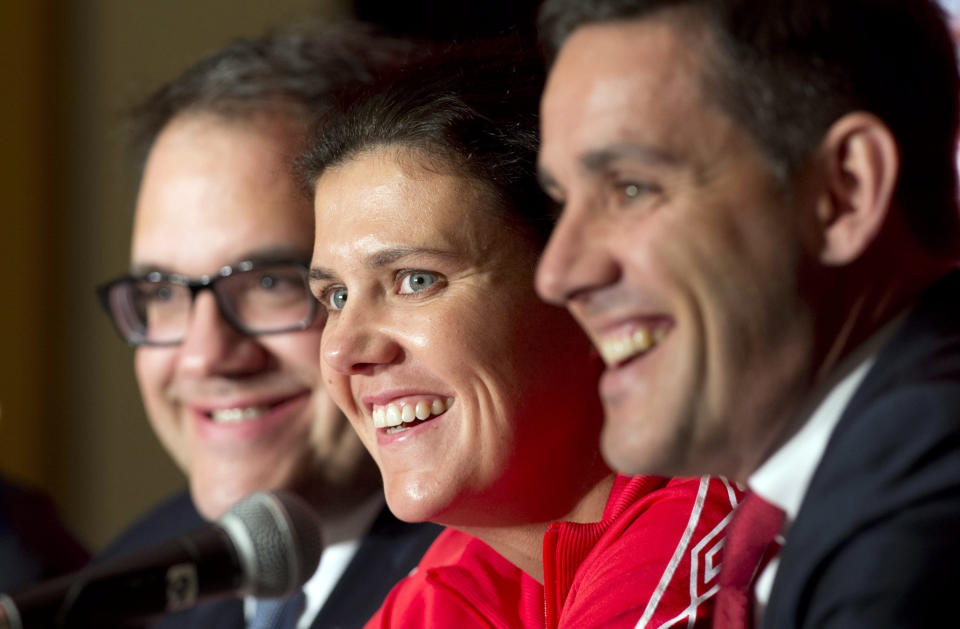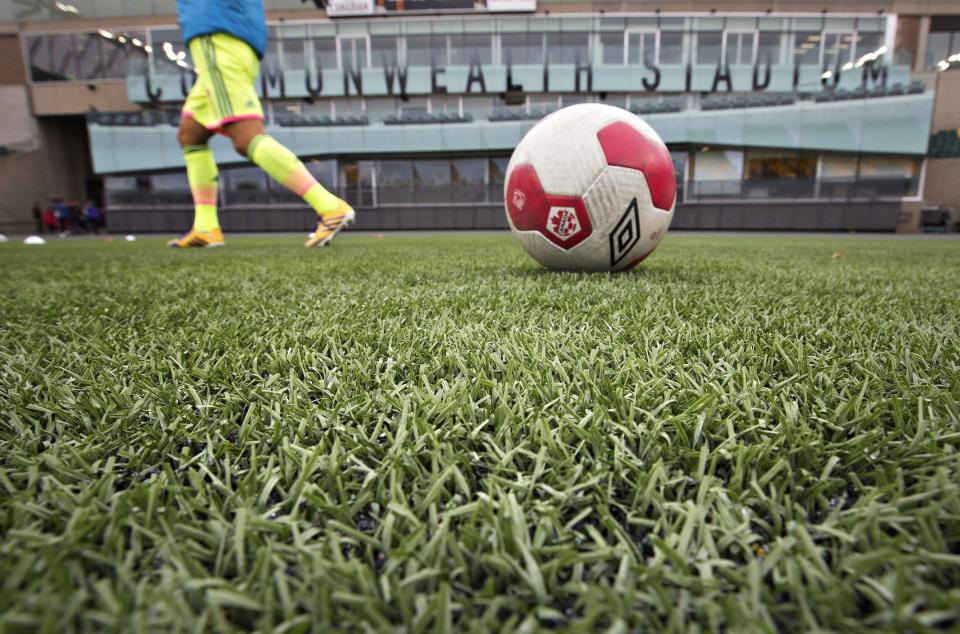FIFA Secretary General Jérôme Valcke stands firm on artificial turf for the Women's World Cup, despite protests from the players

FIFA Secretary-General Jérôme Valcke was on the hot seat at a press conference in Ottawa Friday, ahead of the Saturday’s official FIFA Women’s World Cup draw.
And his answers to questions about both the hot-button artificial turf issue and the disparity in prize money between the men’s and women’s World Cups won’t douse any of the flames any time soon.
“Because it’s a legal case going on, I don’t want to answer any questions or even to talk about the artificial pitch situation. I’m amazed about the size and scale of the discussion about artificial pitch,” said Valcke, who proceeded to do just that, after mentioning that FIFA has “not been served”, and so is not officially involved in the case.
Valcke also announced that GLT (goal-line technology) would be used at the women’s World Cup. And that because of the increase in the number of teams, the prize money will increase from $10 million to $15 million.
Valcke reiterated several points about the surface decision, the first of which being that it wasn’t that FIFA demanded that the women’s World Cup be played on artificial turf, but rather that its statutes mandate that it support the request made by the Canadians.
He also pointed to one qualifying game in Russia, against Germany, where an artificial pitch was used, one of “a number of games” FIFA has organized on artificial surfaces, including in the under-17 and under-20 competitions.
Valcke also pointed out – as if it were somehow relevant to the 2015 event – that France and South Korea, the two candidates in the running to host the eighth edition in 2019, both have decided to use natural grass.
So there will be no debate in four years, although Valcke added that what happens after that is still up in the air. “We’ll see what happens in 2023. It depends on the organizing countries, the different climactic conditions, the different organizations,” he said, looking somewhat aggravated by the line of questioning.
Canadian Soccer association president Victor Montagliano said that he hasn’t examined the study put forth by the group of players fighting for natural turf.
“Our bid was clear, was transparent from the get-go. It involves a lot more than the six stadiums; it involves the entire concept of legacy in this country. So what we’ll be leaving as well are the training pitches for our kids to play on," he said. “The stadiums that we use, unlike in Europe, are multi-use. There are some realities to that. So with respect to our bid, there was never any other concept contemplated at the time of the bid.”
Sitting right next to Montagliano on the dais, Canadian captain Christine Sinclair shifted in her chair a little bit, but showed no outward reaction.

Valcke was appalled by the notion that the surface decision was gender-related, a major component of the players’ complaint.
“If anyone is saying the use of the artificial pitch is a question of discrimination, it’s nonsense, it’s completely crazy to say that,” he said. “FIFA did so much for women’s football over the years. We invested in it. … Every day we’re trying to develop women’s football around the world.”
Where Valcke descended into semantics was in his answer to a question about why, despite his insistence on the importance of keeping the channels of communication open, he wouldn’t participate in a conference call this week to discuss the issue with some of the biggest stars in women’s soccer including American Abby Wambach and 2013 player of the year Nadine Angerer of Germany.
“I’m very happy to discuss, but I won’t discuss by phone. I’m expecting to sit in front of people and not via a phone conference call,” Valcke said Friday. “And I don’t have to speak to a lawyer. Why should I speak to anyone else but the players?”
In Valcke’s defence, the Frenchman speaks English reasonably well. But during the press conference, as questions were asked, he often turned to FIFA media relations manager Ségolène Valentin to help translate. A conference call with disembodied voices with various English accents coming at him would put him at a distinct disadvantage.
Valcke said he will be in Zurich Jan. 12 for the Ballon d’Or, and also recently met with two French national team members in Paris. “I had open dialogue with these two girls. It will be the same when I’m coming here to Canada,” he said.
Sinclair is the only Canadian player in Ottawa for the draw festivities. The rest of the squad is in Vancouver. According to the New York Times, there are no Canadian players listed in the complaint recently filed with the Canadian Human Rights Tribunal.
While many coaches from other participating squads were in attendance Friday, most of the world’s best players are toiling for their club teams or preparing for the Four Nations tournament in Brazil.
“The World Cup is about the players, these 22 (who) on the pitch will give us an amazing show, and an amazing event,” he said. “I am ready to discuss with all the players, all the technical teams, all the coaches – but face to face. I traveled to Paris. I’m ready to travel wherever I have to travel to do that.”

As for the issue of the disparity in prize money between the men’s and women’s World Cups, Valcke warned before the question period even began that questions about that would not be well-received.
“That’s not even a question I will answer, because it’s a nonsense,” he said.
The total amount of prize money distributed at the most recent men's World Cup was $476 million.
So, the question was asked: why is it “a nonsense”?
Valcke pointed to the fact that there have been 30 men’s World Cups, and this was only the seventh for the women. “Things can grow step by step. We still have another 23 before potentially the women should receive the same amount as men,” he said.
“All the media knows, the men’s World Cup pays for all. The men’s World Cup pays for all the 20 FIFA World Cups we organize. The under-17s, the under-20s, beach soccer – all is financed by the men’s World Cup, which brings directly $4.5 billion US to FIFA,” he said.”
Valcke said that Canada is one of the few among the 209 member associations that spends more on women’s soccer than on the men and that for most of the others, that balance is 75 percent for the men, 25 per cent for the women.
He also brought up his efforts from more than a decade ago, in 2003, when he went to companies around the world to try to sell the women’s World Cup as a separate entity.
“I failed. There was not a single company who said, ‘I’m interested in just women’s football.’ Most of the partners were saying, ‘Yes, okay, we’re willing to do it. But what we want is the men’s football, because that’s where we want to put our money.’ “
Valcke said FIFA was working to develop direct income streams for women’s soccer, and when that happens, the women will directly benefit.

 Yahoo Sports
Yahoo Sports 

